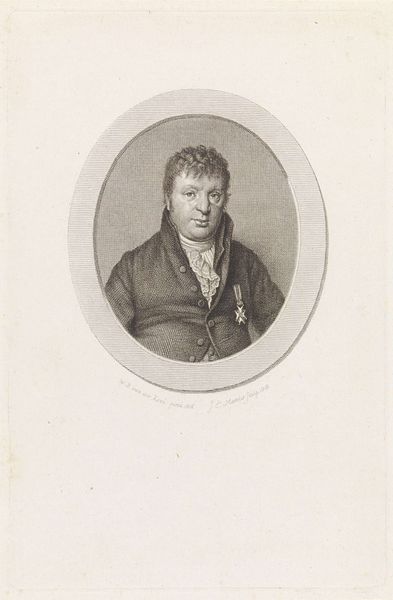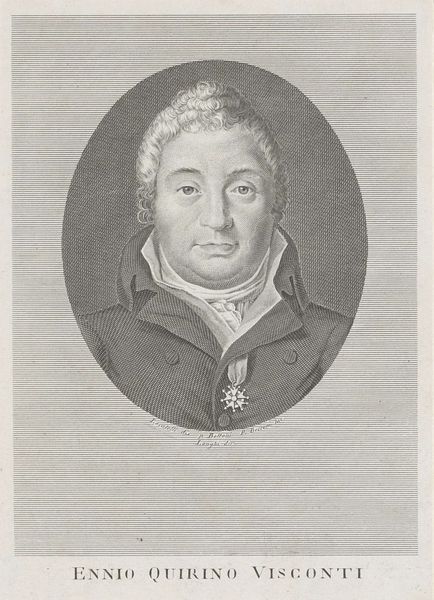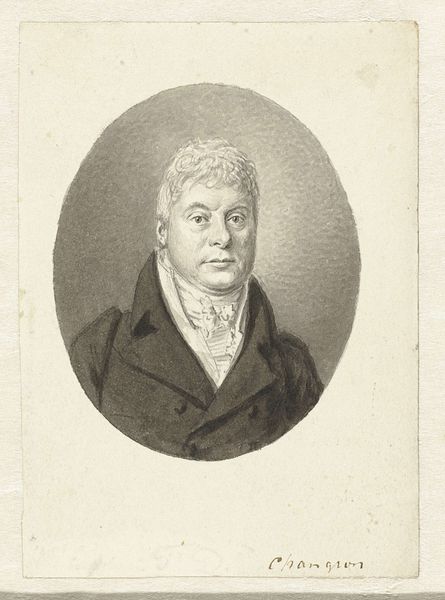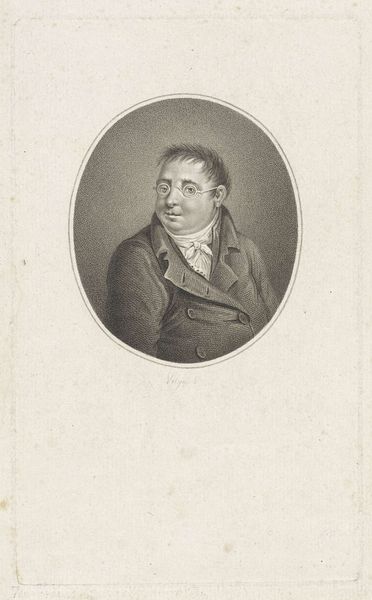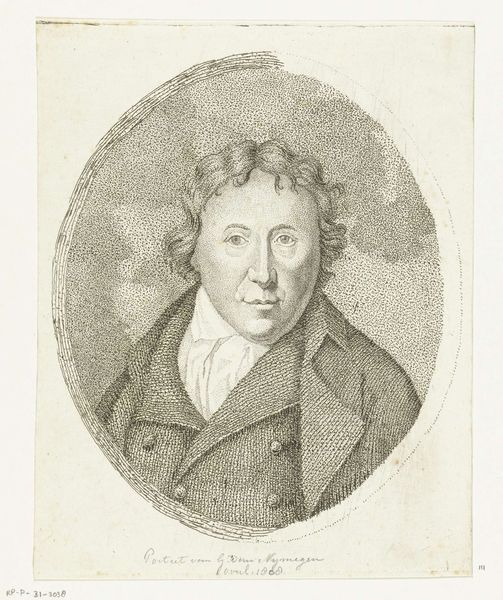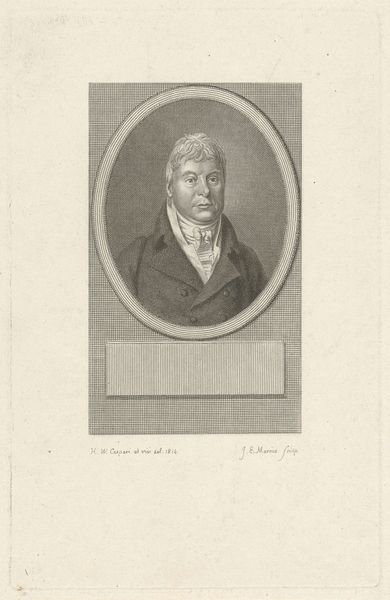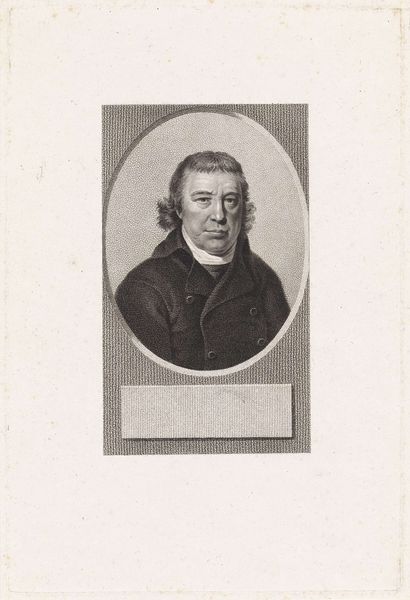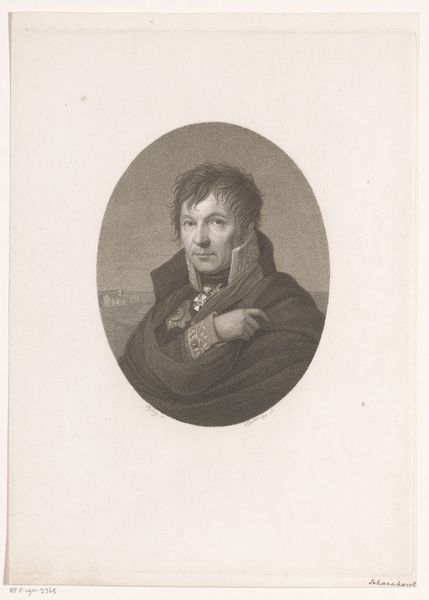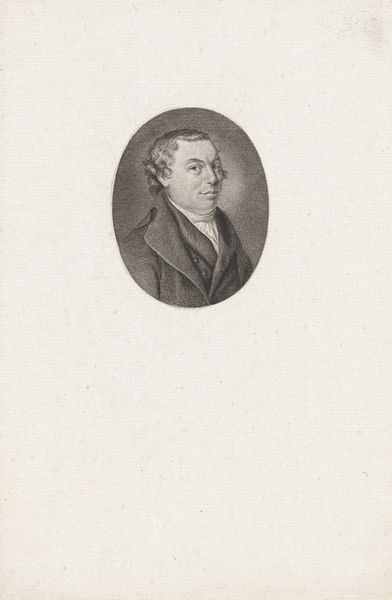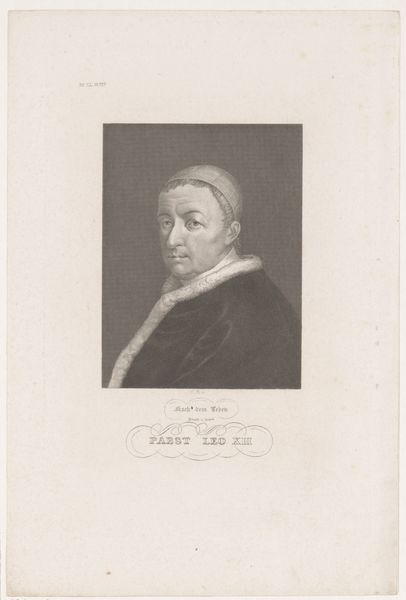
print, engraving
#
portrait
#
pencil drawn
# print
#
pencil drawing
#
romanticism
#
engraving
Dimensions: height 122 mm, width 100 mm
Copyright: Rijks Museum: Open Domain
Curator: Here we have Jacob Ernst Marcus' "Portret van Jacob de Jong," an engraving residing here at the Rijksmuseum, made sometime between 1784 and 1826. Editor: It's strikingly...stodgy. The circular frame focuses all attention onto a face seemingly devoid of expression, isn't it? The rigid symmetry in composition does little to enliven it. Curator: Perhaps that's where you're missing the point, no? Looking at it from a production standpoint, the intaglio print process allowed for mass reproduction. This wasn’t about capturing a fleeting emotion. It's about dissemination. Look at how the marks accumulate into different gray densities that allow depth from a relatively inexpensive method. It speaks to class, accessibility. Editor: That's an interesting insight regarding production and access. Still, stylistically speaking, it's not groundbreaking. It’s stuck in depicting Jacob in an enclosed oval. The focus feels less on the portrayed subject and more on adherence to accepted portraiture conventions. Do you find any symbolism here? Curator: Symbolism in portraiture often lies within social markers, and here that is quite present: clothing, class. An important focus when understanding such portraiture, and others of the Romanticism artistic period, is labor. Each etching required painstaking work from a craftsman operating within a specific economic context. Editor: I do see that this form of portraiture gave rise to the masses as opposed to those elite commissioned oil paintings. Still, one can ask whether these portraits reflected individuality or if they further reinforced social norms by standardizing depictions? The severe rendering contributes to a flattening, almost a mask-like quality that is interesting from a perspective of how individuals can come to be visually homogenized to meet artistic styles and class distinctions. Curator: That’s an important thing to acknowledge when examining this piece of work, as Jacob de Jong's persona then dissolves and blurs with other romantic and post-enlightenment figures. Thinking of this portrait within its material context really changes how we receive its cultural impact now, wouldn’t you agree? Editor: Absolutely, your emphasis on the socio-economic background helps understand its stylistic rigidity and artistic flattening beyond mere aesthetic choices. Curator: Exactly! Editor: Indeed.
Comments
No comments
Be the first to comment and join the conversation on the ultimate creative platform.
